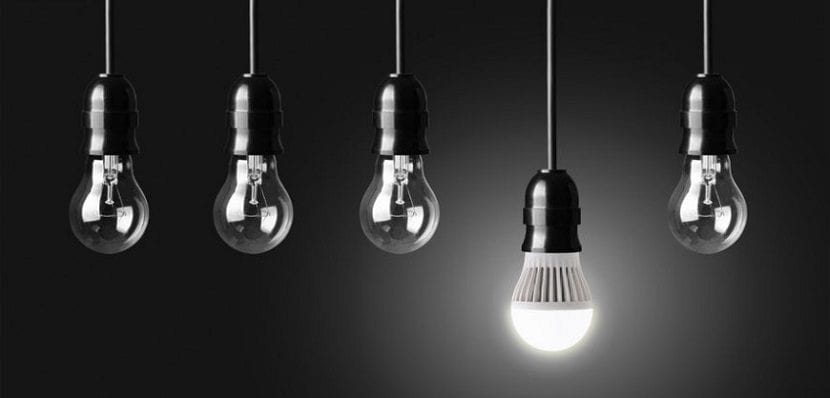
In this article we will explain the different types of bulbs, that are commonly used in homes or offices, with their advantages and disadvantages.
In fact, currently 18% is spent on lighting in homes and over 30% in offices of the value of our electricity bill. If we choose a type of adequate lighting for each use, we will get save between 20% and 80% energy.
Aspects to consider before knowing the types of bulbs:
1. Efficiency, which are the watts (w) consumed by the different types of bulbs.
2. The useful life, which refers to the time each types of bulbs last.
3. The color, since the light that it will emit will be yellowish or white depending on the choice between the different types of bulbs. This will depend on the technology you prefer, since it can be LED, eco halogen or fluocompact.
4. The cycles They are also other aspects to take into account when choosing between all the types of bulbs that exist, since each bulb has established how many times approximately they can be turned on and off.
Another thing to keep in mind is that in Energy saving lightbulbs we quantify them according to your luminosity, through the unit of measure called “lumens" or "lumens”Which just indicates the amount of light emitted.
Instead, the above incandescent bulbs were measured in watts (W), indicating how much electricity consume.
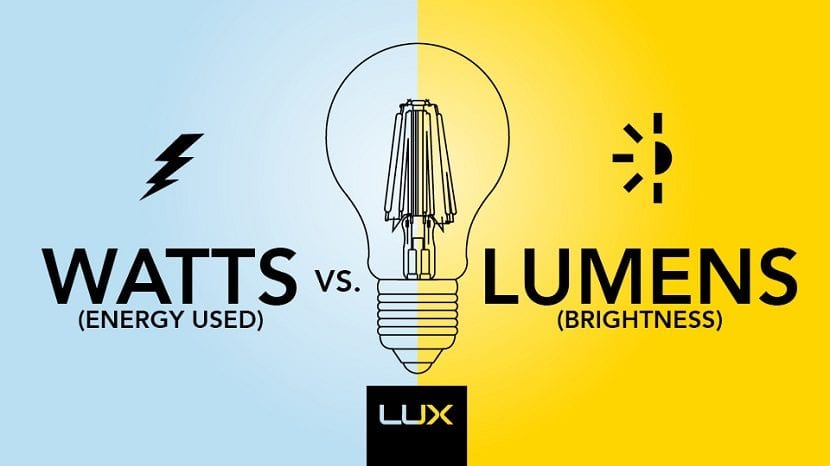
What are Lumens? And how to calculate them
The first question we have to ask is to ask ourselves what is a Lumen?
- The lumens is the unit of the International System of Measurements to measure the luminous flux, a measure of the light power emitted by the source, in this case the light bulb. Each led bulb usually generates between 60 and 90 lumens, so we can calculate that one 15W LED bulb would offer a light output of about 1050 lumens. What would more or less be the light that a 65W incandescent bulb generates.
- This equivalence is the result of the following formula: Actual Lumens = Number of Watts x 70.
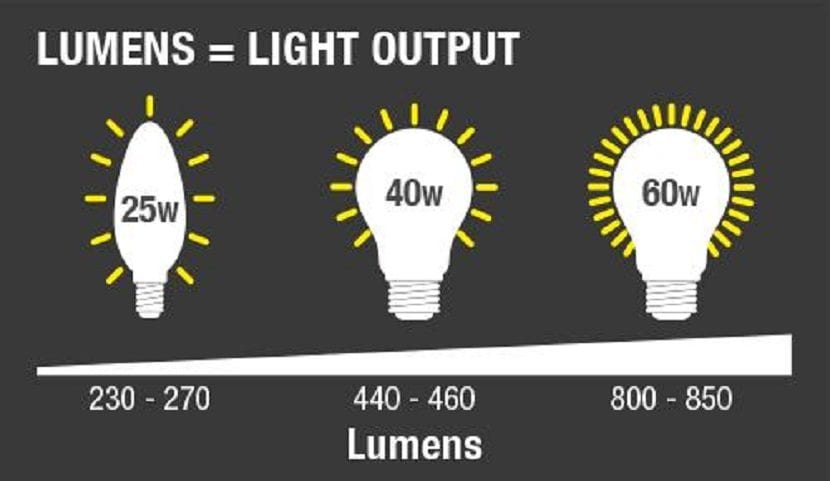
Recommended lighting for rooms in the house
After all that has been explained, we can see a much more practical example that will consist of knowing how many energy saving light bulbs are needed for a certain space, which can be any room in the house.
To know what Lighting level is recommended, we have to refer to the lux. This is one unit of intensity of illumination of the International System, of symbol lx, which is equivalent to the illumination of a surface that normally and uniformly receives a luminous flux of 1 lumen per square meter.
That means, if a room is lit by a light bulb 400 lumens, and the area of the room is 20 square meters, the illumination level will be 20 lx.
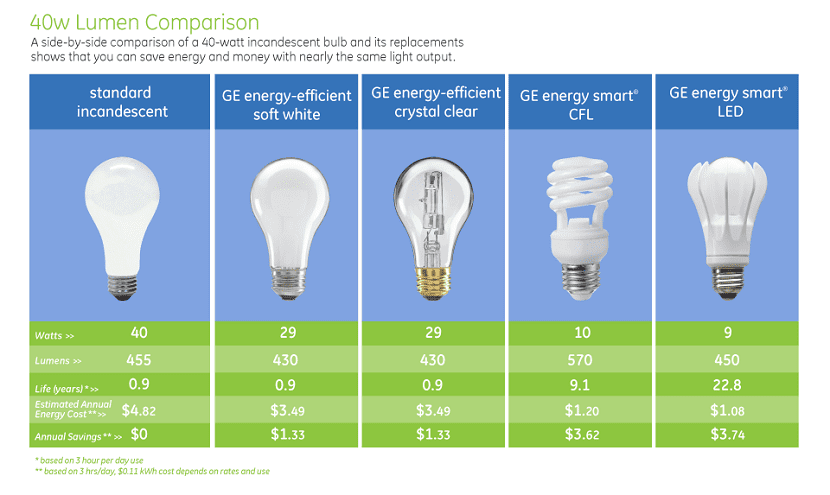
Based on this unit, there are recommended figures for the level of lighting in the home environment, depending on the needs of each space in the house:
- Kitchen: the recommendation for general lighting is between 200 and 300 lx, although for the specific work area (where food is cut and prepared) rises to 500 lx.
- Bedrooms: for adults, not very high levels are recommended for general lighting, between 50 and 150 lx. But at the head of the beds, especially for reading there, focused lights with up to 500 lx are recommended. In children's rooms it is recommended a little more general lighting (150 lx) and about 300 lx if there is an activity and games area.
- Living room: General lighting can vary between about 100 and 300 lx, although for watching television it is recommended that you go down to around 50 lx and for reading, as in the bedroom, an illumination focused 500 lx.
- Bathroom: you don't need too much lighting, about 100 lx is enough, except in the mirror area, for shaving, applying make-up or combing your hair: around 500 lx is also recommended there.
- Stairs, corridors and other areas of passage or little use: the ideal is a general lighting of 100 lx.
Types of bulbs and tips for choosing them
The best Led bulbs
They are the acronym for Light Emitting Diode. The LED bulbs They are the most consistent with the environment, since they represent an ecological option as well as efficient.
This is because they do not emit as much CO2 into the environment as other types of bulbs, and also do not present tungsten or mercury.
Also if we analyze the main features commented above, the lifespan of different types of bulbs, LED bulbs can be used around fifty thousand hours. The savings in terms of consumption is more than significant, since we will be consuming around 80% less than any other traditional incandescent bulb.

The best Eco halogen bulbs.
The light that these types of bulbs give off is especially natural and they turn on instantly. Regarding its useful life, it is usually two thousand hours, consuming an envelope one third less than the incandescent ones, which we are going to comment on below.
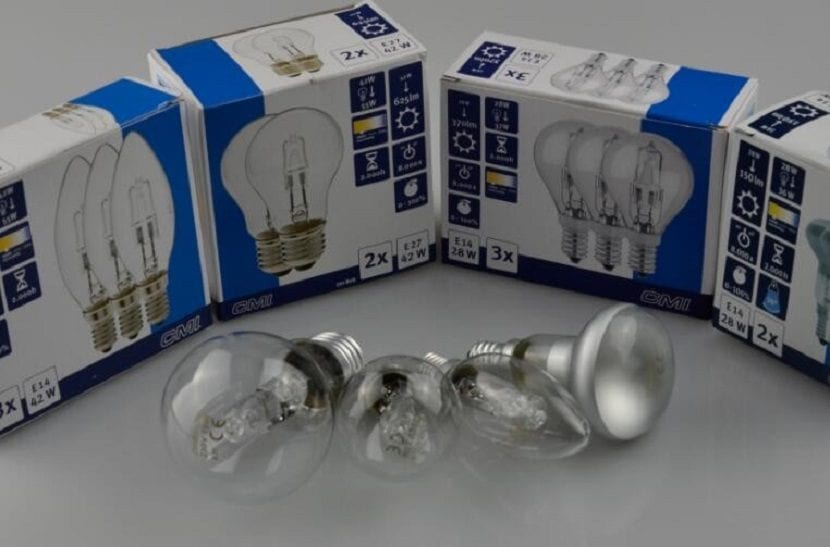
The loss of energy due to the heat effect must be taken into account, since this type of light bulbs they do emit heat.
Incandescent bulbs.
The energy consumption is the highest of all the bulbs, which we will see later reflected in the electricity bill.
Fortunately, from 2009 onwards, it has been producing the withdrawal of this type of light bulbs from the market, giving way to better solutions that offer the same result in terms of brightness, but with a much lower consumption. At the same time it has a high number of cycles, they do not produce heat and reproduce the color correctly.

The best Fluocompact bulbs.
These types of bulbs are known as the low comsumption; having a useful life of between seven thousand and ten thousand hours, and consuming between 75 and 80% percent less than traditional bulbs.
As for the lighting that it gives off, these types of energy saving light bulbs they are not highly recommended for use in transit areas. Since it usually takes a few seconds before offering all the power of your lighting.
What are the characteristics to consider?
a) The time it takes a light bulb to reach the maximum performance, that is, how fast it turns on.
b) Aperture angle or the light beam, which means that at a lower angle, the light will focus on a more specific point.
c) The useful life of the bulb, that is, the hours that the light of the bulb lasts.
d) From an aesthetic point of view, we will attend to the forms. We can find globe, round, spiral or candle bulbs.
e) There are also different shapes of bushing depending on its diameter and thread type that have.
f) The number of times a light bulb can be turned on and off, that is, their cycles.
g) The power of the light or light, in such a way that the more quantity of lumens we will get a greater amount of light.
